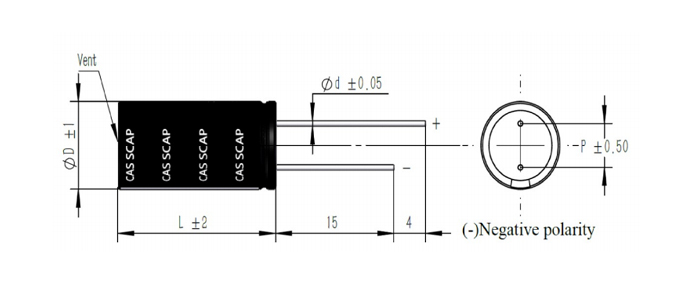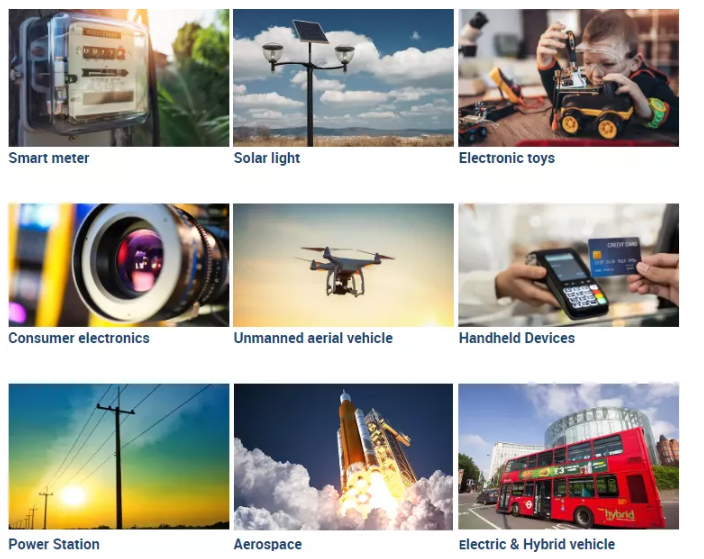Consulting phone:
135-3037-2041
(Mr.Wang)
Product name:
Lithium Ion Capacitors is a Hybrid capacitor , has two advantages at the same time, that is: it can be repeatedly charged and discharged Electric double layer capacitor of "long life" and "high capacity density" of lithium-ion secondary batteries. this ion capacitor Using the technology of pre-doping lithium ions on the negative electrode, it can be used at a low voltage of 3.8V. In addition, it does not contain heavy metals that would pollute the environment, making it an environmentally friendly capacitor. Lithium-ion capacitors are capacitors that have both electric double-layer capacitors and lithium-ion secondary batteries. While using the principle of general electric double-layer capacitors, the negative electrode material uses carbon-based materials that can absorb lithium ions. Lithium ions, increasing the energy density. It is an asymmetric capacitor with different principles of positive and negative electrodes. It adopts a structure that combines the positive electrode of the electric double layer capacitor and the negative electrode of the lithium ion secondary battery. Charge and discharge through the redox reaction of lithium. Compared with previous capacitors, the energy density is high, mainly because the negative electrode is pre-doped with lithium ions, and the electrostatic capacity of the negative electrode is increased.
Series Specification Sheet:
Specification | characteristic | |||||||
Rated voltage V R | 2.7V.DC | |||||||
surge voltage | 2.85V.DC | |||||||
Capacity range | 1F-120F | |||||||
Operating temperature range | -40℃~+65℃ | |||||||
Product life | Normal
temperature cycle life: At 25°C, the capacitor is charged and
discharged 1 million times between the specification voltage and the
half-rated voltage with a constant current. Capacity attenuation ≤30%
times, internal resistance change ≤2 times | |||||||
High temperature endurance life: under the condition of +65℃, the rated voltage is applied for 1000 hours. Capacity attenuation 30%, internal resistance change ≤2 times | ||||||||
Product performance table:
Product number | Forehead Certainly Electricity Voltage (V) | Nominal capacity ( F) | Product ruler inch mm | Internal resistance | Working current | peak value Electricity stream (A) | Leakage current (72hrs /µA) | can quantity (IN. h) | Energy Density (W.h/kg) | functional density (Kw / kg) | |
Outer diameter (D) | high Degree (L) | ESRA C(25℃/mΩ) | (A) | ||||||||
SCD2R7S205C03DSZ | 2.7 | 2 | 8 | 12 | 100 | 0.43 | 1.57 | 8 | 0.0020 | 1.84 | 2.21 |
Dimensions:

Application areas:

testing method:
1. Electrostatic capacity test method:
(1) Test principle
Super capacitor The electrostatic capacity is tested by the method of constant current discharge of the capacitor, and it is calculated according to the formula.
C=It(U1-U2)
In the formula: C - electrostatic capacity, F;
I-constant discharge current, A;
U1, U2 - use voltage, V;
t-Discharge time required for U1 to U2, S
(2), test procedure
Charge the capacitor with a current of 100A, charge the capacitor to the working voltage and keep the voltage constant for 10 seconds, then discharge the capacitor with a current of 100A, take U1 as 1.2V and U2 as 1.0V, record the discharge time within this voltage range, and the total cycle Capacitance, take the average value.
2. Stored energy test
(1) Test principle:
Super capacitor The test of the energy of the capacitor is carried out by using the voltage range given by the capacitor to discharge the capacitor with constant power to 1/2 of the working voltage. The output energy W of the capacitor is obtained from the relationship between the constant discharge power P and the discharge time T, namely:
W=P.T
(2) Test procedure
Charge the capacitor to the working voltage with a constant current of 100A, and then keep it constant until the charging current drops to the specified current (10A for traction type, 1A for start-up type), after 5 seconds of rest, discharge the capacitor with constant power to 1/2 of the working voltage, record Discharge time and calculate magnitude. Repeat the measurement 3 times and take the average value.
3. Equivalent series resistance test (DC)
(1) Test principle
The internal resistance of the capacitor is measured according to the sudden change of the voltage within 10 milliseconds of the capacitor disconnecting the constant current charging circuit. That is: in the formula:
R - the internal resistance of the capacitor;
U0 - capacitor cut off the voltage before charging;
Ui - cut off the voltage within 10ms after charging;
I - cut off the current before charging.
(2) Measurement process
Charge the capacitor with a constant current of 100A, disconnect the charging circuit when the charging working voltage is 80%, use a sampling machine, record the voltage change value within 10 milliseconds after the capacitor is powered off, and calculate the internal resistance, repeat 3 times, and take the average value.
4. Leakage current test
After charging the capacitor to the rated voltage with a constant current of 100A, charge the capacitor with a constant voltage for 30min at this voltage value, and then leave it open for 72h. During the first three hours, the voltage value was recorded every minute, and during the remaining time, the voltage value was recorded every ten minutes.
Calculate the self-discharge energy loss, SDLF=1-(V/VW)2, and the calculation time points are: 0.5, 1, 8, 24, 36, 72h.
Note: The voltage tester must have high input impedance to minimize the impact of discharge.